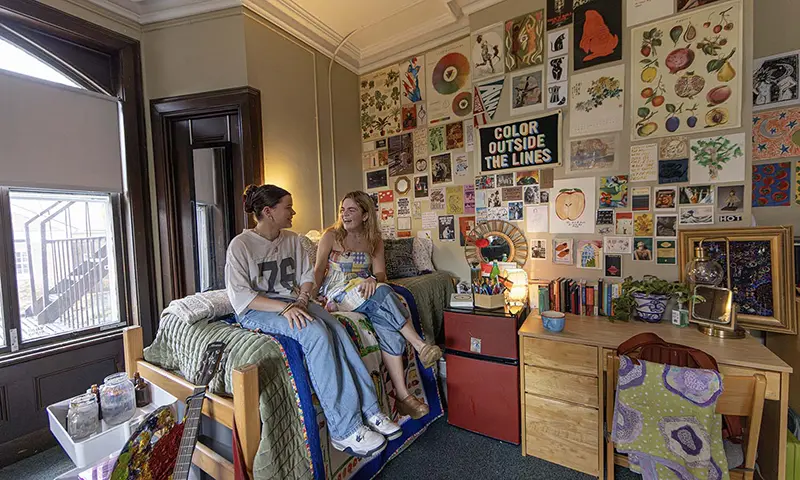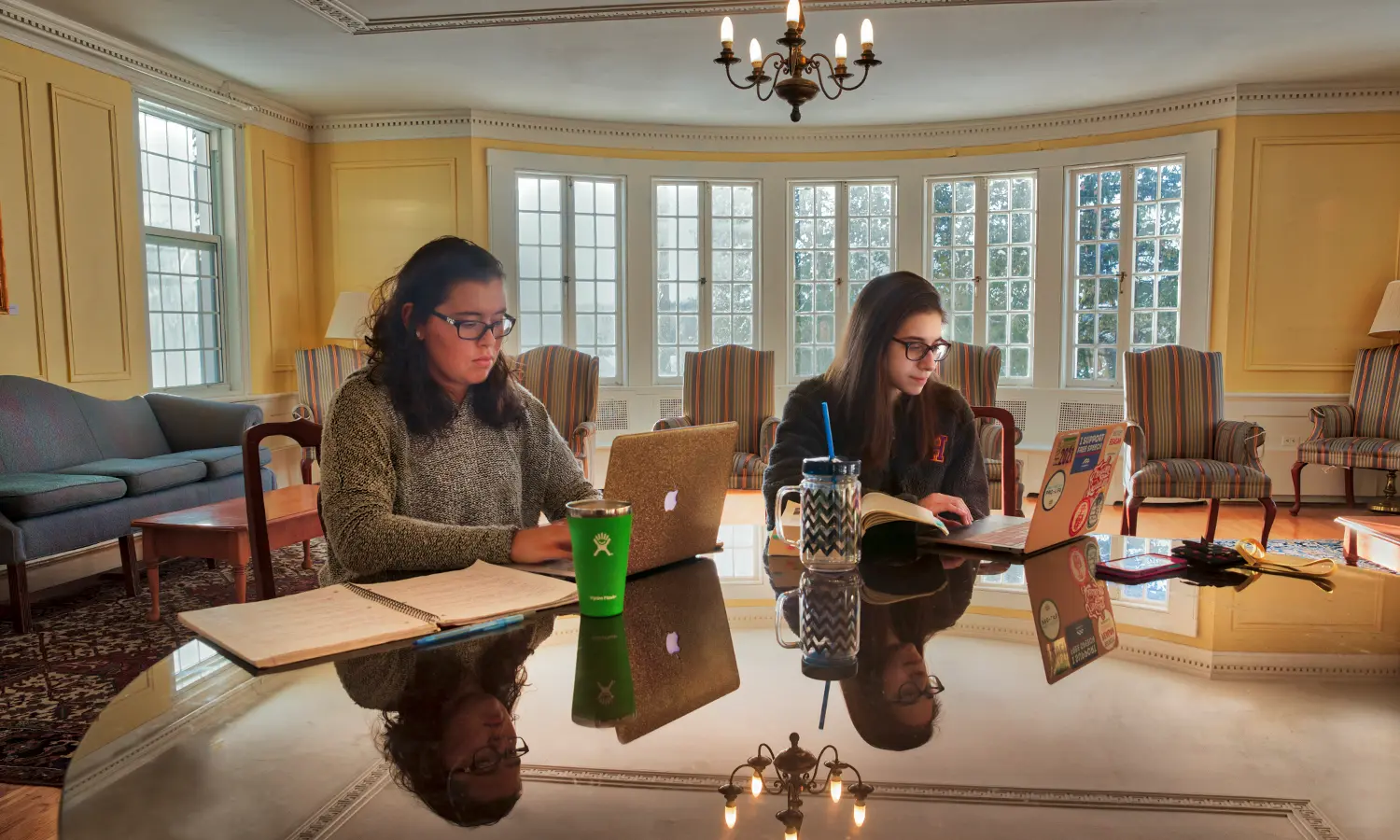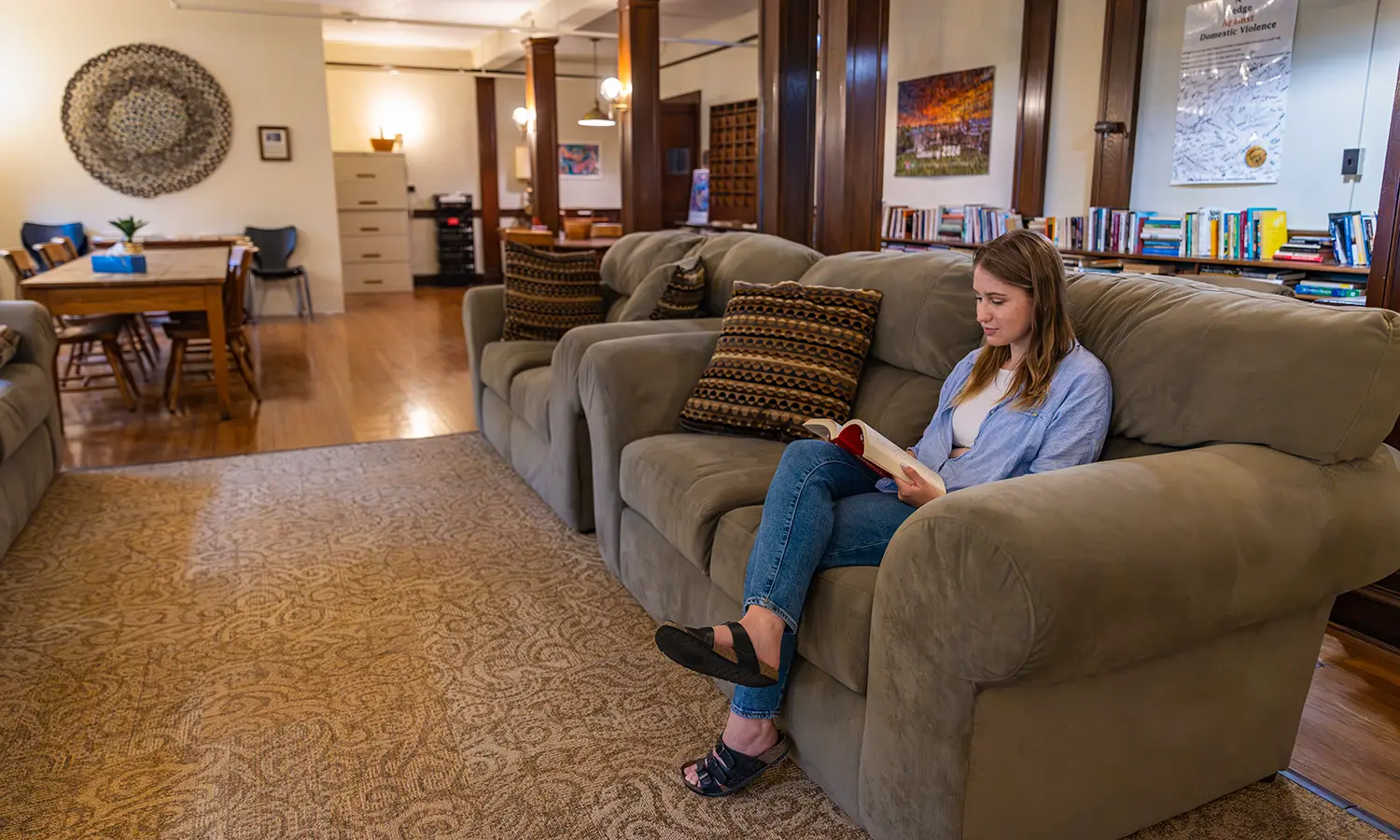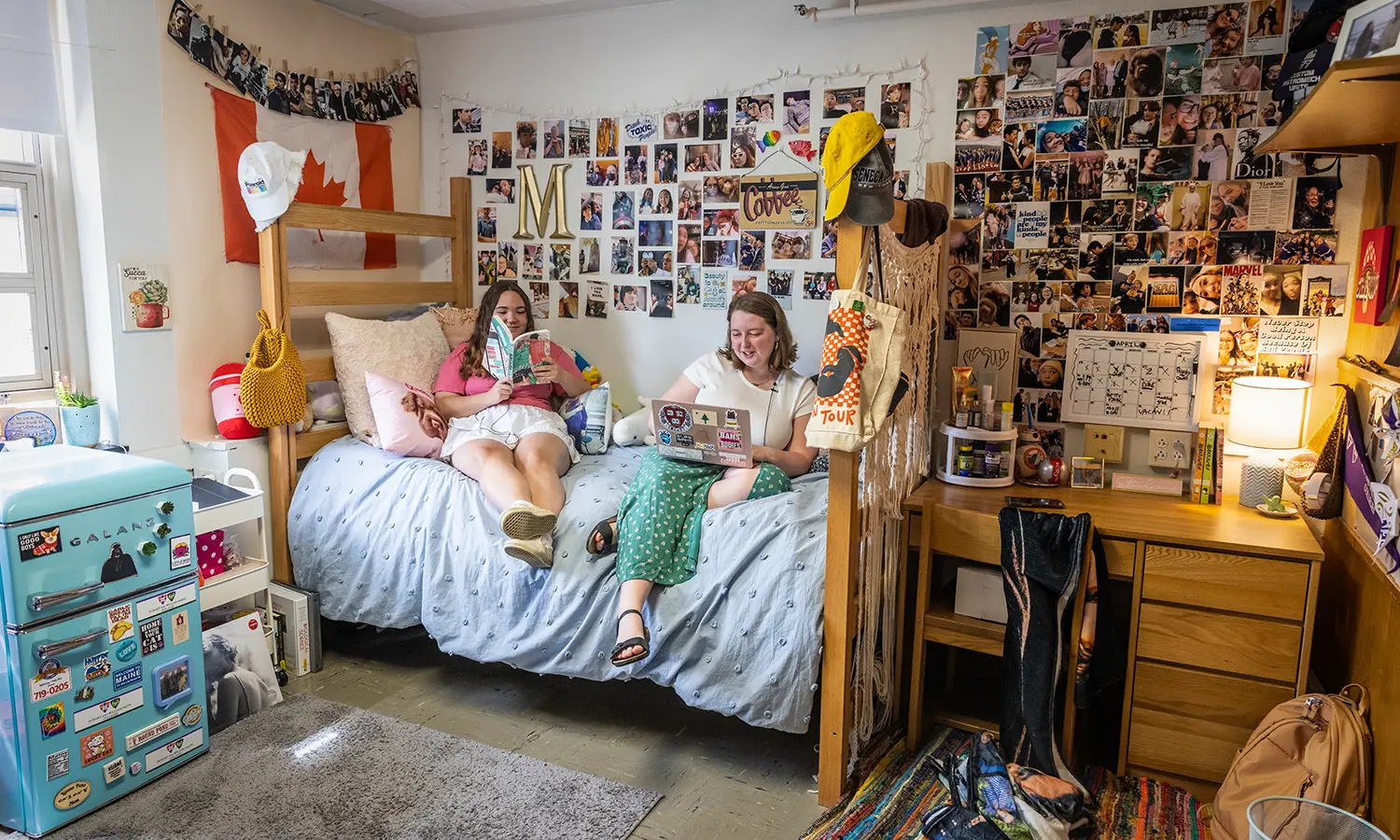WILLIAM SMITH HILLNEIGHBORHOOD

A double in Blackwell House.
BLACKWELL, COMSTOCK, MILLER AND HIRSHSON HALLS
The William Smith Hill Neighborhood consists of four buildings located at the top of William Smith Hill. These four buildings are rich in William Smith College history. Blackwell, Comstock, Miller and Hirshson Halls are home to William Smith students, with each building having its own character and community.
Blackwell House
Blackwell House is known for its beautiful Victorian design. The house is home to 32 William Smith students. Built in 1863, Blackwell House was originally designed for William B. Douglas, a Hobart Trustee. It became the first residence hall at William Smith College in 1906.
|
AMENITIES AT A GLANCE |
|
|
Room Types(s) |
Single, Double, Triple, and Quad Occupancy |
|
Bathroom(s) |
Multi-stall, single gender bathrooms on each floor |
|
Laundry Room(s) |
In-hall, available on first floor |
|
Common Spaces |
Lounges and soft seating found throughout |
|
Kitchen Access |
Kitchen available on first floor |

Comstock Hall
Comstock Hall is one of the most well-known and highly sought after William Smith housing locations. It is home to 90 William Smith students. The lowest level, known as Comstock Pondview, offers a beautiful lounge and study space. Comstock Hall is the only residential location where two bedrooms share a bathroom in-between – making for a unique living experience.
CHECK OUT MARIE’S ROOM IN COMSTOCK HALL IN THIS EPISODE OF HWS HOMES
|
AMENITIES AT A GLANCE |
|
|
Room Types(s) |
Single and Double Occupancy |
|
Bathroom(s) |
1 bathroom per 2 rooms |
|
Laundry Room(s) |
In-hall, available on first floor |
|
Common Spaces |
Lounges and soft seating found throughout |
|
Kitchen Access |
Kitchen available on second floor |

miller house
Miller House was the second residential building to be built in the William Smith Hill Neighborhood. It is home to 42 William Smith students. The Women’s Resource Center is housed in Miller House and provides a unique location for students to study, use the library’s resources, and spend time together. Miller House was built in 1911. William Smith, the founder of the College, laid the cornerstone of this building.
|
AMENITIES AT A GLANCE |
|
|
Room Types(s) |
Single, Double, and Triple Occupancy |
|
Bathroom(s) |
Multi-stall, single gender bathrooms on each floor |
|
Laundry Room(s) |
In-hall, available in the basement |
|
Common Spaces |
Lounges and soft seating on basement and first floors |
|
Kitchen Access |
Kitchen available in basement |

Hirshson Hall
Hirshson Hall is an all first-year student residential facility that is home to 75 William Smith students. Hirshson Hall has a full ballroom/classroom on the first floor and it is often used by groups for meetings and events. William Smith first-year students love the experience of residing in Hirshson Hall because it provides the unique experience of the William Smith Hill Neighborhood and residing near many Upperclass students.
CHECK OUT Hirshson HALL IN THIS EPISODE OF HWS HOMES
|
AMENITIES AT A GLANCE |
|
|
Room Types(s) |
Single, Double, and Triple Occupancy |
|
Bathroom(s) |
Multi-stall, single gender bathrooms on each floor *Gender-Inclusive bathroom(s) available |
|
Laundry Room(s) |
In-hall, available in the basement |
|
Common Spaces |
Ballroom and third floor lounges available |
|
Kitchen Access |
Kitchen available on first, attached to the ballroom |
WHAT’S IN A NAME?
- Blackwell House was originally named the Douglas mansion, as it housed Dean Douglas of Hobart College. The house was then renamed for Elizabeth Blackwell, the first woman to receive a medical degree in the United States.
- Comstock Hall is named for a trustee of Hobart College, Anna B. Comstock. Ms. Comstock was a friend of Mr. William Smith and also had a great influence on him to create the college.
- Hirshson Hall is named for Reverend Louis Melbourne Hirshson. Reverend Hirshson served as president of Hobart and William Smith Colleges from 1956 – 1966.
- Miller House is named for Mrs. Elizabeth Smith Miller, a friend of Mr. William Smith and pioneer abolitionist and suffragist. Mrs. Miller was influential in the decision to create a women’s college.
